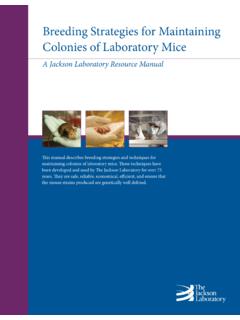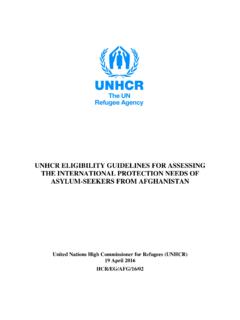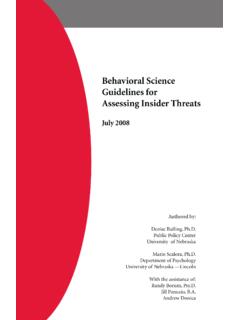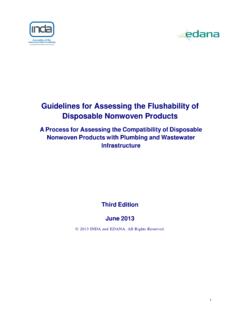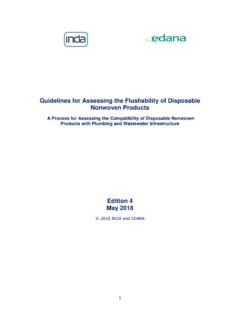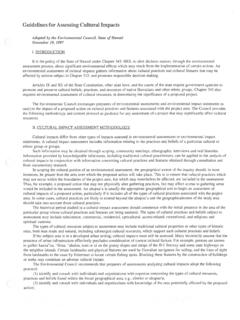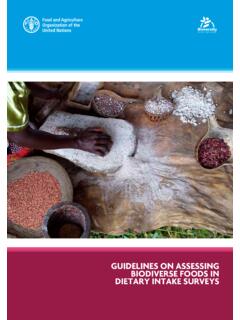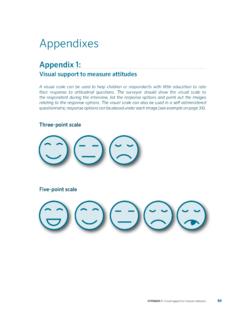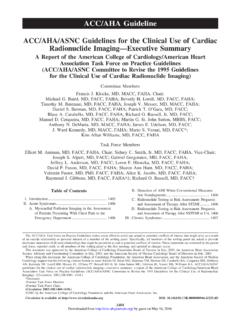Transcription of Guidelines for Assessing the Health and Condition of Mice
1 Transgenic and knockout technologieshave caused a shift in research focus atmany institutions. Increased numbers ofmice some with potentially debilitatingphenotypes are being maintained totheir natural life spans, and this has chal-lenged the laboratory animal communityto devise effective strategies for monitoringand managing these from meeting essential obliga-tions for ensuring the well-being (freedomfrom discomfort, distress, and pain) of theresearch mouse, effective management andsupervision of mouse colonies is useful infulfilling the 3 Rs (replacement, reduc-tion, refinement) put forth by Russell andBurch1.
2 We also suggest a fourth essential R, investigator responsibility, since inves-tigators are increasingly monitoring andmanaging their own transgenic colonies. Awell-monitored and -managed rodentcolony will provide: more precise informa-tion on the progression of disease or phe-notype; clear criteria for data collection;recovery of data potentially lost whenunmonitored mice die; improved quality,and increased uniformity, of data due tostandardized techniques for monitoringhealth; additional observations and charac-terization of phenotypes; possible decreasein number of mice needed to characterize aphenotype.
3 And decreased costs of charac-terizing a Importance of EndpointsWhen there is potential for animal pain,distress, or suffering, investigators need tooutline clearly the research objectives andprocedures for Assessing animal Health . It isnecessary to define appropriate experimen-tal endpoints that allow for early interven-tion ( ,euthanasia), while attainingexperimental objectives, minimizing dataloss, potentially reducing animal suffering,and improving the quality of data establishing criteria for assessinghealth and endpoint determination, we rec-ommend that investigators avoid the terms sick or moribund, which may havediverse meanings to different , for effective communication, inves-tigators and veterinary staff must find acommon descriptive ground for monitor-ing criteria.
4 Further, they must agree onwhen animals should be criteria for determining suffer-ing and predicting death are poorlydescribed in both human and veterinaryliterature, and are commonly subjectiveand overly optimistic2-4. A number of pub-lications have defined techniques forrefined determination of experimentalendpoints for specific types of studies, andhave proposed criteria for monitoring ani-mal Health . Examples include: weight lossin a central nervous system tumor model5;hypothermia in septicemia models6,7; painon abdominal palpation in a gallstonemodel8; and freezing and scratching behav-ior in arthritis models9,10.
5 These criteria arehelpful, and some may be applicable inother experimental monitoring criteria, which areboth comprehensive and useful, have beendescribed in the literature11-29. We haveincorporated these and other empiricallyderived criteria into Guidelines for investi-28 RESOURCEV olume 28, No. 4 Lab AnimalApril 1999 Guidelines for Assessing the Health andCondition of MiceCharmaine J. Foltz, DVM, Dipl. ACLAMand Mollie Ullman-Cullere, BS, MSWith the development of transgenicand targeted mutant (knockout)technologies over the past 10 years,there has been an increase in thenumber of investigators using mice;the number of mice used in biomed-ical research; the number of micebred and maintained to their naturallife spans; and the number of micewith potentially adverse or debilitat-ing phenotypes.
6 The authors pre-sent practical Guidelines for assess-ing and monitoring the Health ofthese is affiliated with the Oak Ridge NationalLaboratory, Life Sciences Division, BearCreek Rd., Oak Ridge, TN 37831. Ullman-Cullere is affiliated with the MassachusettsInstitute of Technology, Division of Biology,Cancer Research Center, Cambridge, MA02139. NB: Guidelines were developed atMassachusetts Institute of Technology,Division of Comparative Medicine,Cambridge, MA. Please send reprintrequests to Foltz at the above effective communication,investigators and veterinarystaff must find a commondescriptive ground for moni-toring criteria. Further, theymust agree on when animalsshould be , providing interpretations of theirimportance and recommendations forcourses of action.
7 Investigators receivethese Guidelines when they submit experi-mental protocols to the IACUC as an aidfor formulating strategies for Guidelines help to open lines ofcommunication between investigative andveterinary staff, enabling development ofspecific criteria for monitoring and end-point determination. Once staff membershave better characterized a specific pheno-type or experimental paradigm, they caninstitute specific scoring techniques, pre-ventative or supportive strategies, andexperimental authors have found that investiga-tors, as well as animal care and veterinarystaff, have readily accepted the Guidelines ,using them as a training tool and for pro-tocol development.
8 Although mice are notcovered under the Animal Welfare Act(AWA), and some institutions may not besubject to the principles in the Guide,mostfacilities adhere to standards described inthese regulatory documents30,31. We havefound that the Guidelines in this articlehelp both investigators and animal carestaff meet the requirements espoused inthose documents. We emphasize thatinvestigators should contact the veterinarystaff for further advice in applying theseguidelines to their research needs; develop-ing preventative and supportive strategies;determining appropriate endpoints; andfor information on infectious causes andtreatment of goal has been to establish tech-niques for monitoring that are not labori-ous or time-consuming, and to find prac-tical methods that the investigator or vet-erinary staff can perform rapidly andeffectively in various model following Guidelines , including atechnique for evaluating body Condition (musculature and fat deposits over thesacroiliac bones), are useful and easy toimplement in a wide variety of study par-adigms.
9 Experimental validation of thistechnique is described in the mandated by the Guideand the USGovernment Principles for the Utilizationand Care of Vertebrate Animals Used inTesting, Research, and Training, investiga-tors have an obligation to minimize pain,discomfort, and distress in the animalsused in their research. Part of fulfilling thatobligation is recognizing when an animal swell-being is recommend evaluating individualmice at least once a week (in addition tothe daily observation mandated by regula-tory agencies) to identify mice that mayneed to be monitored more closely, or per-haps Condition ScoringBody Condition scoring (BCS) is a use-ful tool for evaluating overall Condition ofthe mouse.
10 Techniques such as obtainingbody weights or temperatures regularlymay be impractical, and investigators maybe reluctant to perform them. When one isstudying genetically altered animals, or anyresearch mouse in danger of deterioratingover a long period, and monitoring largecolonies with a spectrum of ages, BCS, asdescribed below, offers a useful, rapid,practical, and objective alternative forhealth assessment. BCS is particularlyhelpful in cases where pregnancy, organo-megaly, or tumor growth may interferewith body weight is simple to perform: when pickinga mouse up at the base of the tail, note itsbody Condition by passing your finger overthe sacroiliac bones (back and pubicbones).
